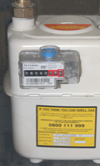Piston ring blow-by
 After all this talk about the different types of piston rings - barrel, scraper, taper scraper and not forgetting of course the oil control ring - how do we assess their effectiveness and, perhaps more important, how do we know when things are starting to go wrong?
After all this talk about the different types of piston rings - barrel, scraper, taper scraper and not forgetting of course the oil control ring - how do we assess their effectiveness and, perhaps more important, how do we know when things are starting to go wrong?
One way, I suppose, is to look behind you. If you see a slight blue haze in the rear view mirror then either you have a fancy tinted rear window or the beginnings of a major catastrophe. And should it be the latter, there is no mistaking the smell of burning oil.
To the rest of us, regular checking of the dipstick when the engine is cold and parked in the same level place will give a much better guide. However, this is measuring only one function of the piston ring pack - that of oil control when the oil from the crankcase passes up the bore. What about that other function of the rings, that of sealing the combustion gases and preventing them from going down the bore and entering the crankcase? Engineers call this piston ring blow-by. Oil goes up the bore, piston ring blow-by goes down it.
One way, and perhaps the most reliable of all, is to measure it using a common domestic gas meter. A positive displacement device consisting of two or more sets of chambers separated by a diaphragm, piston ring blow-by coming from the crankcase is directed through a series of valves, which alternately fill and empty the chambers from an uninterrupted flow. As the diaphragms move, mechanical systems transfer the linear motion into the rotary motion of a counter, which registers the amount of gas metered.
When used as a blow-by meter, all the engine breathers around the engine need to be blanked off and the total crankcase flow ducted through the meter and vented to atmosphere. Accurate, reliable and virtually foolproof as well as imposing little back-pressure on the flow of gas, the domestic gas meter has in my opinion few peers for measuring blow-by, with little to go wrong.
With modern test cell data acquisition systems the downside is the difficulty of connecting this meter to a computer. Fortunately, vortex-shedding flow meters came to the rescue, being not only easy to install and integrate with modern computer systems but also insensitive to the high levels of exhaust gas contaminants contained in the flow. These vortex-shedding devices measure the volumetric flow rate using the Karman Vortex principle.
Consisting of a plain tube with a small circular strut within it, when air or gas is drawn past the strut small vortices are produced on the downstream side. Alternating from each side of the strut, these flow down the tube with the gas, and the frequency with which they pass an ultrasonic detector is proportional to the flow of gas. With no moving parts, minimal pressure drop, an electronic output and ability to handle contaminated air, these devices can be inserted almost anywhere into an engine.
However, most race engines these days are fitted with dry-sump systems, whose scavenge pumps extract not only the lubricating oil but also the ring blow-by contained within it. Such blow-by meters, whether domestic gas or vortex-shedding, are therefore impossible to use. In such cases the only method of determining the quality of the seal between ring and bore is the leak-down test.
Applied to a static engine, the procedure consists of removing the spark plugs once fully warm and then, after positioning the piston at TDC firing on each cylinder in turn, measuring the decay in pressure inside the cylinder of a supply of compressed nitrogen or dry air. If the gas is supplied at, say, 100 psi and the pressure gauge from the cylinder reads 95 psi then the leak-down is said to be 5%. While 5% is considered adequate for a roadcar engines, for racing nothing less than 3% is acceptable. However, more importantly, cylinders throughout the engine should not vary more than a couple of psi.
Not totally foolproof, the leak-down test also checks for leaking head gaskets and valves.
Fig. 1 - The domestic gas meter
Written by John Coxon